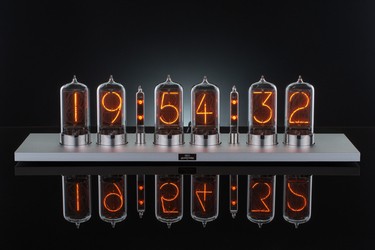This is a procedure used to make your clock more accurate in case it doesn’t keep the time precisely without an internet connection.
Normally our clocks are synchronized to the internet, so you will not notice any problems.
But if your clock is running offline, or the connection is not stable enough, the clock will not be able to synchronize and after a long enough time it will go out of sync.
This can be solved by keeping the clock online, manually adjusting the time, or calibrating the RTC oscillator.
The calibration values are expressed in ppm (1ppm = 0.0001%).
For example, if the clock is 1ppm too fast, it will add 1 more second every 1 000 000 seconds.
The default calibration value for all clocks is currently fixed at -59ppm.
How to calibrate the clock
First, the clock needs to have the correct time. Either connect it to the internet and let it synchronize or set the time manually.
Then it needs to be switched offline so that it does not synchronize during the test.
You need to measure the time deviation in a certain time frame. The longer the better.
The resulting deviation in ppm equals deviation from actual time in seconds divided by length of the test in seconds times 1 000 000.
If the clock is running too fast, you need to subtract the calculated deviation from the current calibration value. If it is running too slow you need to add it.
For example if I run the test for 30 days and the time on the clock at the end of the test is 10:21:45, while the actual time is 10:22:30 (the clock is 45s slower), the clock will be calibrated like this:
deviation from actual time = 10h 22m 30s – 10h 21m 45s = 45s
length of test = 30days * 24h * 60m * 60s = 2 592 000 s
deviation in ppm = 45s / 2592000s * 10^6 = 17ppm
My clock is running too slow, so I need to add the calculated deviation to the current set deviation.
If the current deviation is the default value of -59ppm, I will set it to -59+17 = -42ppm, which is not in the list, so I need to round to -43 or -41ppm.
If you have a 4 digit clock and cannot see the seconds, you can estimate the deviation by waiting for the clock to roll over to the next minute and reading the current time at that moment.
https://time.is is a good reference for the current precise time.


